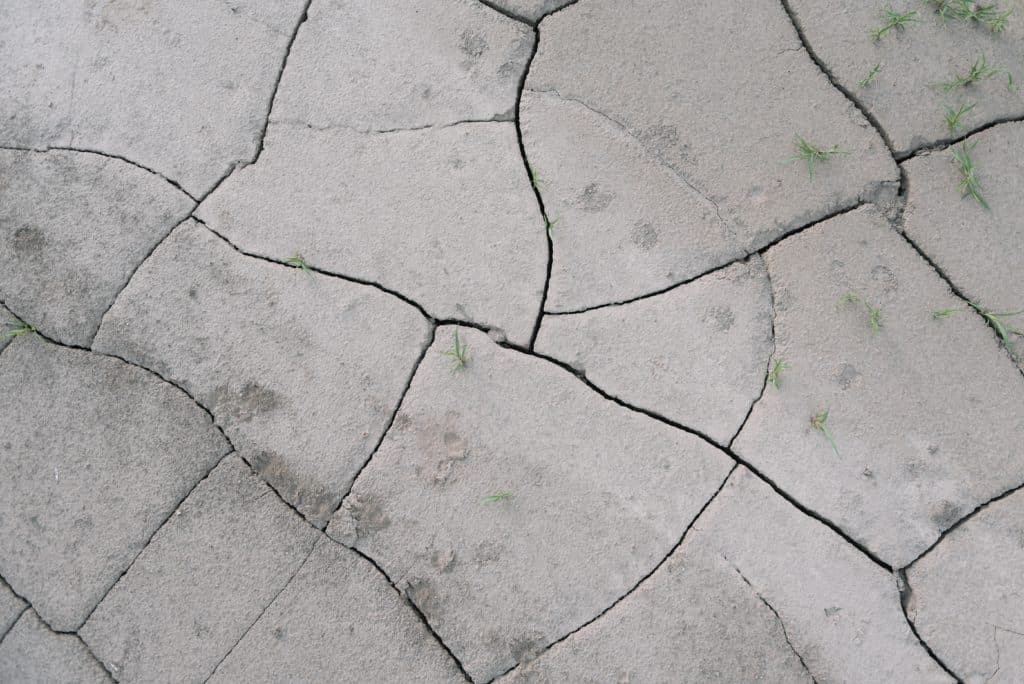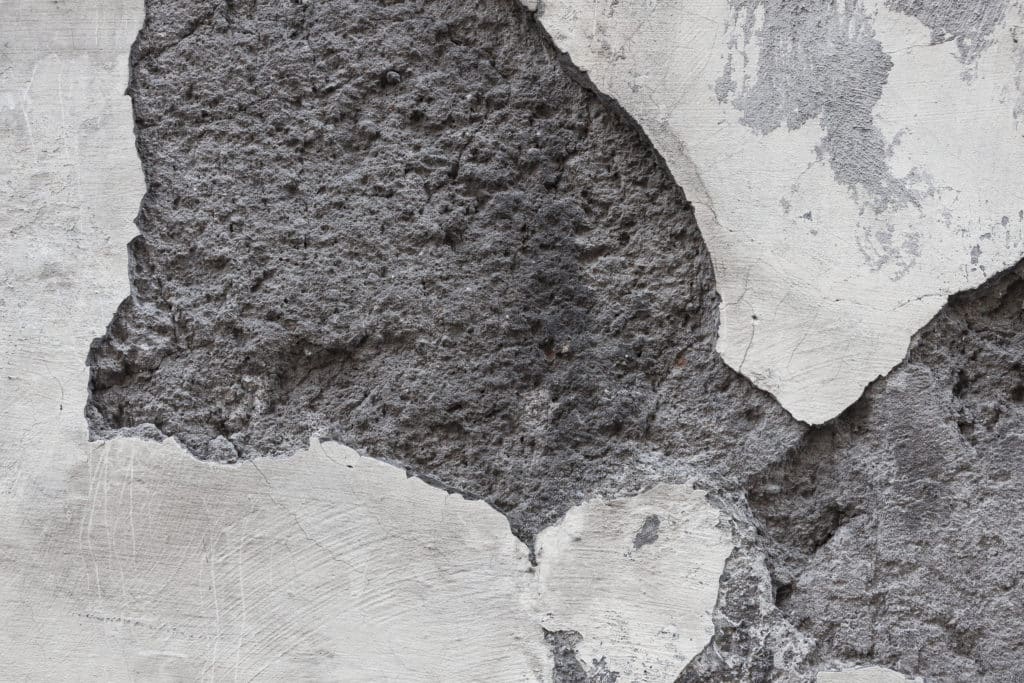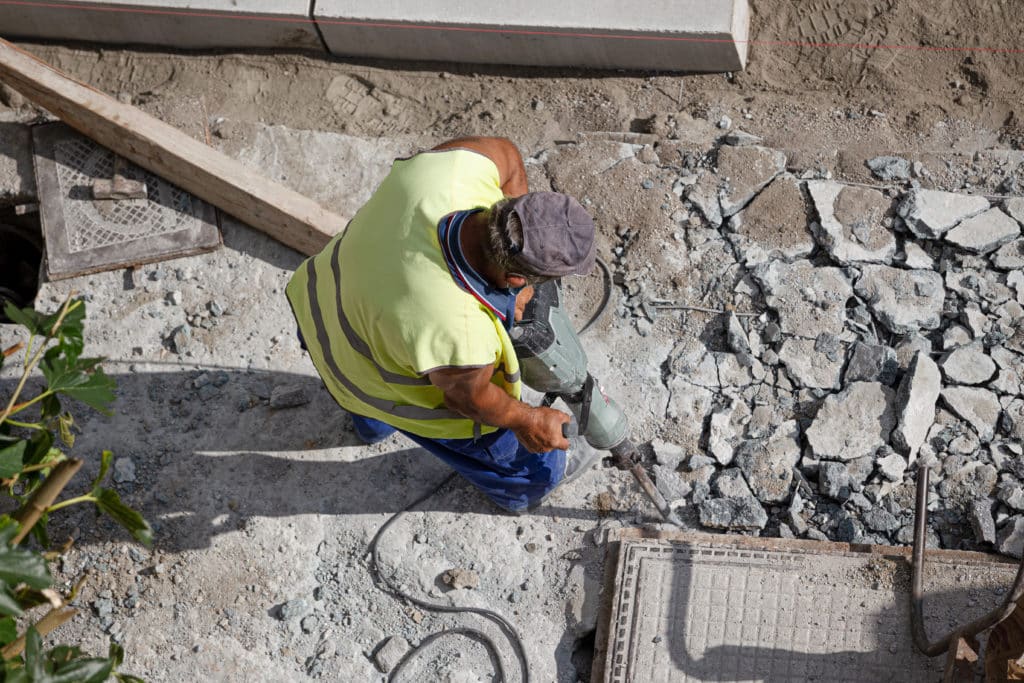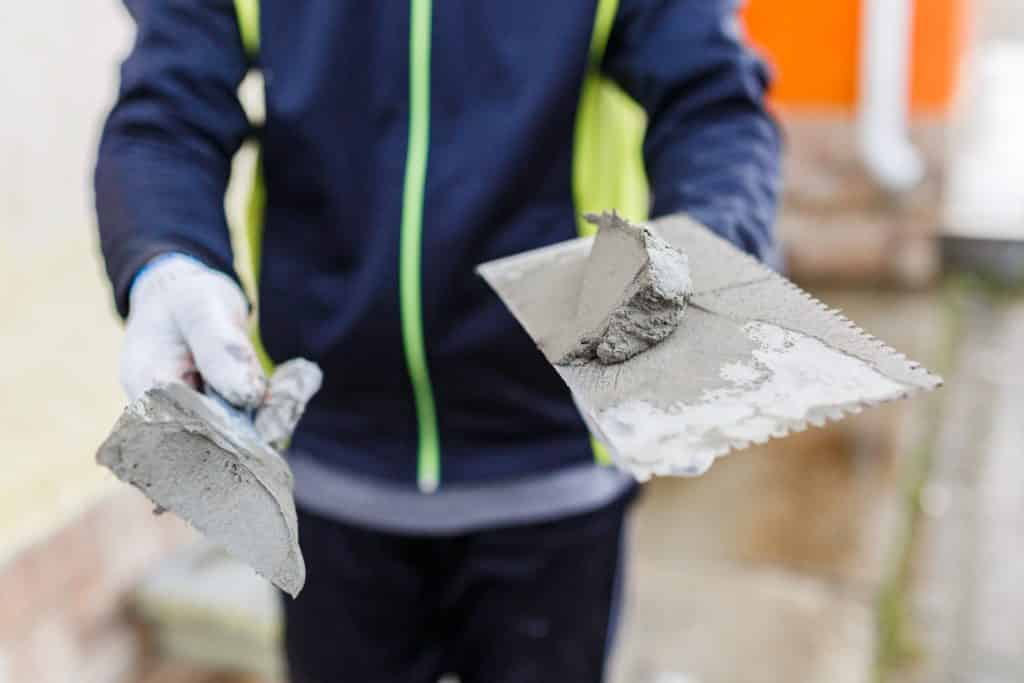Spalled concrete is a widespread problem that homeowners and property managers face, often characterized by flaking, cracked, or pitted surfaces. It can detract from the aesthetics and structural integrity of concrete structures such as driveways, patios, and floors. Multiple factors contribute to spalling, such as exposure to freeze-thaw cycles, the use of de-icing salts, improper concrete finishing and curing techniques, or even a bad concrete mix.

Repairing spalled concrete is essential to prevent further damage and restore the surface to its original strength and appearance. Various methods are available, ranging from patching the damaged areas with color-matching compounds to resurfacing the concrete with an overlay. The chosen method often depends on the extent of the spalling and the specific conditions of the concrete.
Understanding the causes of spalling and selecting the right repair solution helps in extending the life of concrete surfaces and keeping them safe for use. Concrete repair contractors can offer professional advice and services, ensuring that the repairs are performed effectively using the right materials and techniques.
Understanding Concrete Spalling

Concrete spalling is a common degradation process affecting the integrity, appearance, and longevity of concrete structures. It is crucial to understand its causes, effects, and the way it manifests in various environments to address it effectively.
Causes of Spalling
Spalling typically arises from environmental and material stresses on concrete. Key factors include:
- Moisture: Water ingress can lead to spalling through freeze-thaw cycles where trapped water expands and contracts, causing stress and eventually flaking off the concrete surface.
- Corrosion: The reinforcement bars within concrete can corrode, especially when exposed to chlorides such as from deicing chemicals. This corrosion increases volume, creating internal pressures that can flake off the concrete cover.
- Chemical: Concrete exposure to aggressive chemicals can lead to a carbonation process where pH levels drop, allowing for the corrosion of steel reinforcement.
- Physical: Factors like stress and shrinkage due to improper curing or a poor concrete mix can lead to surface cracks that escalate to spalling.
Effects of Deterioration on Concrete
Deterioration effects include:
- Structural Weakness: Progression of spalling can expose reinforcing bars to further corrosion, reducing the structure’s load-bearing capacity.
- Aesthetic Damage: Flaking and pitted surfaces detract from a structure’s appearance and can decrease property values.
- Safety Hazards: Loose concrete can pose falling risks, and sharp edges can be dangerous to passersby.
Spalling Concrete in Different Environments
The environment plays a significant role in concrete spalling:
- Cold Climates: In areas with severe winters, the use of deicing chemicals and frequent freeze-thaw cycles exacerbate spalling.
- Coastal Regions: High salt concentrations can accelerate reinforcement corrosion, leading to increased spalling.
- Industrial Areas: Exposure to harsh chemicals and pollutants can increase the risk of carbonation and related spalling.
By understanding the multifaceted nature of concrete spalling, one can better prepare for and execute necessary repairs or take preventative actions to mitigate further damage.
Preparation and Assessment for Repair

Construction worker with jackhammer drilling concrete on sidewalk. City Maintenance concept
Before beginning a concrete repair project, one must accurately evaluate the extent of the damage and prepare the surface correctly. These critical steps will ensure the longevity and effectiveness of the repair work.
Evaluating the Extent of Damage
A thorough evaluation is paramount to determine the depth and severity of the spalled concrete. Non-destructive testing methods, like sounding techniques, help identify delaminated areas without causing further damage to the concrete surface. For example, the concrete may be assessed using a hammer to sound the surface and locate damaged areas, which can then be marked for repair. For an in-depth assessment, one might refer to standards such as ASTM D4580.
Surface Preparation Techniques
Proper surface preparation is essential for a sound repair. Initial steps include the removal of all loose and deteriorated concrete to reach a solid base. This might include using tools like chisels and hammers for smaller areas or a pressure washer for more extensive surfaces.
- Rust Treatment: Any exposed steel reinforcement must be cleaned to remove rust, which can be achieved through wire brushing or sandblasting.
- Cleaning: After removing loose material and treating rust, the surface should be thoroughly cleaned, potentially with a pressure washer, to ensure a contaminant-free surface for the new concrete to adhere to.
By following these guidelines, repairs will provide a durable remedy to concrete damage.
Repair Material and Methods

Choosing the right repair material and implementing proper repair techniques are crucial for the longevity and structural integrity of concrete restoration projects. This section provides a focused approach on selecting materials, application processes, and finishing techniques to effectively repair spalled concrete.
Choosing the Right Repair Material
One must consider the extent of the concrete damage before selecting a repair material. For superficial damage, a cementitious overlay or patching material might suffice. However, deeper spalling may necessitate the use of epoxy or full depth restoration materials to restore structural integrity. It’s essential to match the repair material with the original concrete mix to ensure compatibility and a seamless repair.
| Damage Severity | Suggested Material |
|---|---|
| Superficial | Cementitious Overlay |
| Moderate | Patching Material |
| Deep | Epoxy |
| Structural | Full Depth Restoration |
Concrete Repair Techniques
To repair spalled concrete, the technique used must suit the depth and severity of the damage. Surface repairs can often be resolved with hand troweling of mortars, ideal for smaller areas. For damages greater than one-third of the concrete’s thickness, techniques such as placement of steel bars followed by a comprehensive material fill are recommended.
- Surface Repair: Hand troweling, color matching compounds
- Structural Repair: Steel bar installation, high-strength fillers
Placement and Finishing
Proper placement and finishing practices are vital. After preparing the area and applying a bonding agent, the chosen repair material needs to be placed carefully, ensuring it adheres firmly to the existing structure. The finishing process, which includes curing, must be tailored to the specific material used to avoid future issues such as shrinkage or cracking. For overlays, a smooth and level finish should be achieved to restore the surface’s appearance and functionality.
- Placement: Ensure firm adherence, avoid air pockets
- Finishing: Tailor curing to material, achieve smooth surface
Protecting and Preventing Future Spalling

To effectively guard against spalling, one must adopt a proactive approach, focusing on moisture control and persistent maintenance. By sealing and waterproofing concrete, along with regular upkeep, spalling can be significantly mitigated.
Waterproofing and Sealing
A key strategy in preventing spalling involves applying a waterproofing membrane or sealant to block moisture penetration. Water is a primary contributor to spalling, as it can enter concrete, freeze, and expand, leading to cracking and spalling. Products like silicate-based sealers can penetrate the surface and create a protective barrier. Waterproofing efforts should start shortly after the concrete has achieved its initial curing, ensuring a strong and resilient surface.
Maintenance and Protective Measures
Routine maintenance plays a crucial role in preventing concrete spalling. It is imperative to conduct regular inspections for cracks or signs of moisture penetration. Any identified issues should be addressed promptly to prevent further damage. Additionally, applying a protective coating can fend off harmful effects of weathering and wear. For areas exposed to de-icing salts, the use of sealers specifically formulated to resist salt penetration is recommended. Robust maintenance efforts supplemented with high-quality sealers extend the life of concrete structures and curtail the progression of spalling.
Practical Considerations for Successful Repair
When repairing spalled concrete, it is essential to focus on the proper curing process and maintaining the structural and aesthetic integrity of the concrete. Attention to these details ensures the longevity and functionality of structures like driveways, patios, and bridges.
Curing and Quality Control
Curing is critical to repair durability. It involves maintaining appropriate moisture, temperature, and time conditions to allow the repair material to properly harden. For proper curing, one can use a curing compound that should be applied as per the manufacturer’s guidelines. This step is crucial for concrete driveways and walkways where the likelihood of early exposure to traffic could impede the repair process.
Quality control measures during the repair process include thorough mixing of the repair material, correct application techniques, and environmental conditions monitoring. Each phase should be documented to maintain a consistent quality standard and to ensure long-term performance.
Aesthetic and Structural Considerations
Aesthetic appearance is as important as structural soundness, especially for visible surfaces like an integrally colored concrete driveway or a patio. Matching the color and texture of the existing concrete can be achieved through the use of color additives or by selecting a repair material that blends well with the original structure.
From a structural standpoint, the repaired area should restore the concrete’s integrity. This means assessing the depth of damage and using reinforcements if necessary, particularly in load-bearing structures like bridges. All repairs should meet the structural requirements to ensure safety and prevent future spalling.
Addressing these practical considerations with knowledge and care will enable a successful spalled concrete repair, preserving both the function and form of the concrete structure.

 CALL US NOW
CALL US NOW



